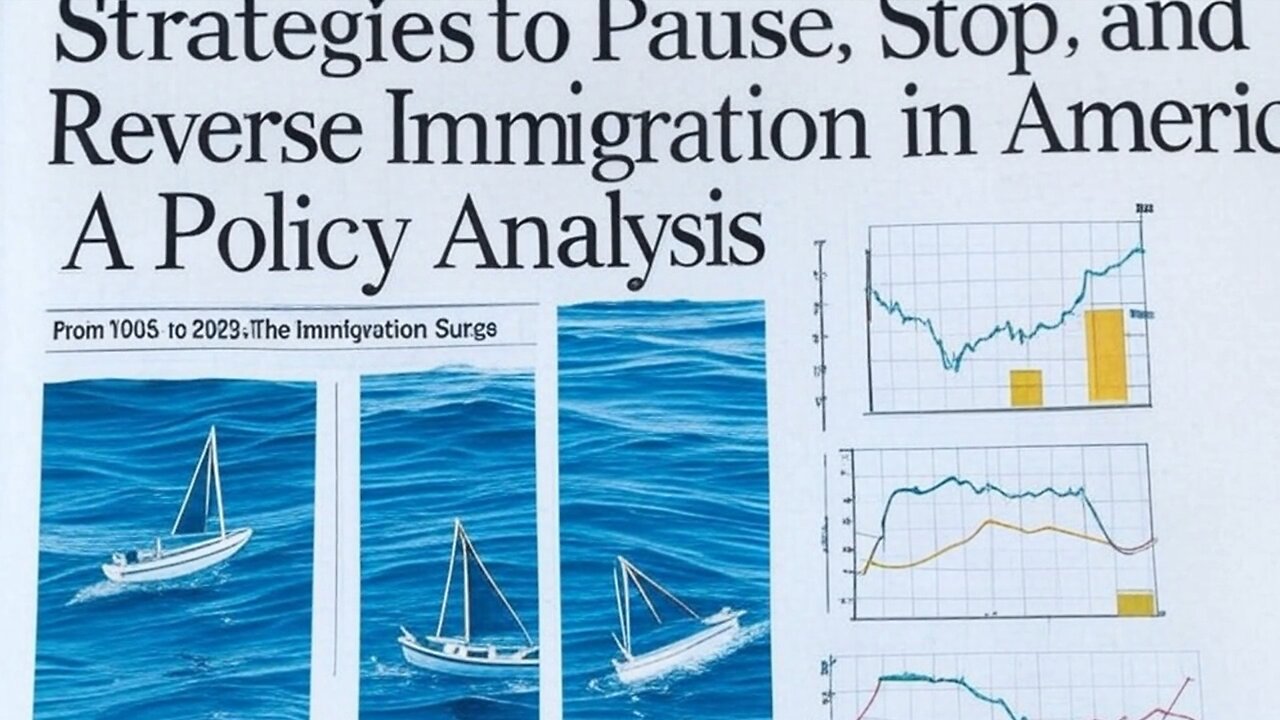Premium Only Content

Strategies to Pause, Stop, and Reverse Immigration in America: A Policy Option Analysis
Since the Immigration and Nationality Act of 1965, the United States has seen its foreign-born population climb dramatically, shifting the nation’s demographic landscape. This rise has fueled discussions about whether the country could temporarily halt all immigration, permanently end it, or even roll back the foreign-born population to levels seen before the 1965 law. Each approach involves distinct strategies, drawing on existing laws, historical efforts, and the realities of today’s immigration system, while facing unique obstacles that test their practicality.
A temporary pause on immigration could be enacted swiftly through presidential powers and administrative action. The President has authority to block entry for national interest reasons, as seen in past travel bans and pandemic-era restrictions that slashed legal arrivals. Shutting down visa processing worldwide and tightening border enforcement could further choke inflows, potentially stalling millions of entries in a year. However, gaps in enforcement and legal pushback would likely limit the pause’s effectiveness, making it a short-term rather than transformative move.
Permanently stopping all immigration is a far steeper challenge, requiring a radical rethinking of the current framework. It would mean dismantling the legal pathways established over decades, scrapping every visa category, and exiting international agreements that protect refugees. Physically, it demands an impenetrable border—think walls, surveillance, and patrols on a scale never achieved—while confronting reliance on immigrant workers and global backlash. Historically, even strict quotas never fully halted inflows, suggesting that a total ban, while imaginable, stretches beyond what’s realistically achievable.
Reversing the foreign-born population to pre-1965 levels is the most ambitious idea, aiming to shrink today’s numbers by tens of millions. Mass deportation on this scale would dwarf past efforts, requiring an enforcement apparatus and budget far beyond current capacity, plus legal changes to uproot even citizens tied to post-1965 arrivals. Alternatively, encouraging people to leave voluntarily—through job restrictions or benefit cuts—has shown only modest results in the past, while waiting for natural decline would take decades and still fall short of the goal. The sheer size and diversity of the modern foreign-born community, spanning multiple continents, make this a logistical and ethical quagmire.
The context reveals a nation reshaped by waves of newcomers, with today’s mix heavily favoring arrivals from Africa, Asia, and Latin America, unlike the European dominance of earlier eras. Undoing this shift would disrupt industries, strain resources, and ignite social tensions, especially as many descendants of immigrants are now woven into the fabric of American life through birthright citizenship.
In the end, pausing immigration is the most doable, leaning on executive muscle, but it’s a fleeting fix. Stopping it forever demands a legislative and physical overhaul that defies precedent and practicality. Reversing decades of growth ventures into territory no policy has conquered, clashing with economic needs, legal limits, and human realities. While each option can be sketched out on paper, turning them into action exposes a gap between ambition and the messy truth of governing a diverse, interconnected nation.
Read the full unabridged report with additional analysis at Real Free News
#Immigration #USPolicy #ForeignBorn #BorderControl #Demographics
-
 26:11
26:11
Athlete & Artist Show
14 hours agoWho Will Make Team Canada + Finland IIHF Controversy
205 -
 3:38
3:38
Blackstone Griddles
15 hours agoBlackstone Betty's Avocado Toast on the Blackstone Griddle
4771 -
 23:17
23:17
Fit'n Fire
19 hours ago $0.43 earnedShould You Own A Budget Rifle? PSA Freedom 15 vs Hi-Point HP15 vs Kel-Tec RDB
1265 -
 8:26
8:26
Hollywood Exposed
14 hours agoKid Rock LEAVES Bill Maher Scrambling After Trump Debate Gets Messy
1052 -
 LIVE
LIVE
BEK TV
2 days agoTrent Loos in the Morning - 11/17/2025
219 watching -
 9:25
9:25
MattMorseTV
14 hours ago $28.11 earnedTrump’s GAMBLE just PAID OFF… BIG TIME.
21.1K85 -
 18:03
18:03
Nikko Ortiz
19 hours agoNikko Ortiz Night Routine...
99.5K16 -
 LIVE
LIVE
FyrBorne
10 hours ago🔴Battlefield REDSEC Live M&K Gameplay: Pyro+ Games
294 watching -
 LIVE
LIVE
Lofi Girl
3 years agolofi hip hop radio 📚 - beats to relax/study to
470 watching -

BBQPenguin_
2 hours agoEscape From Tarkov 1.0 Wipe! New Story & Full Release!
5